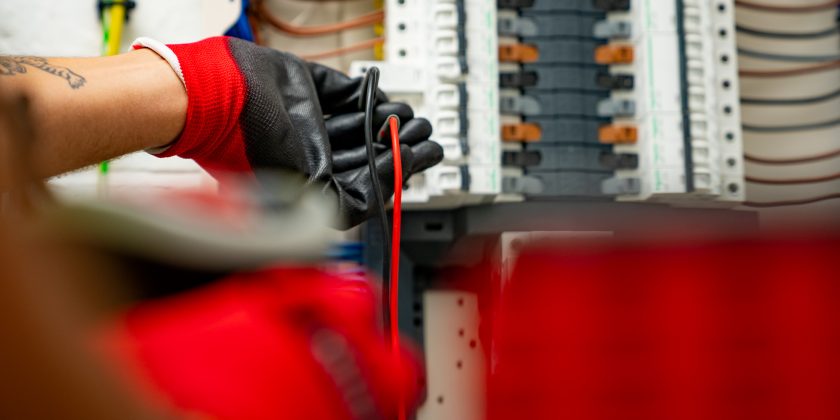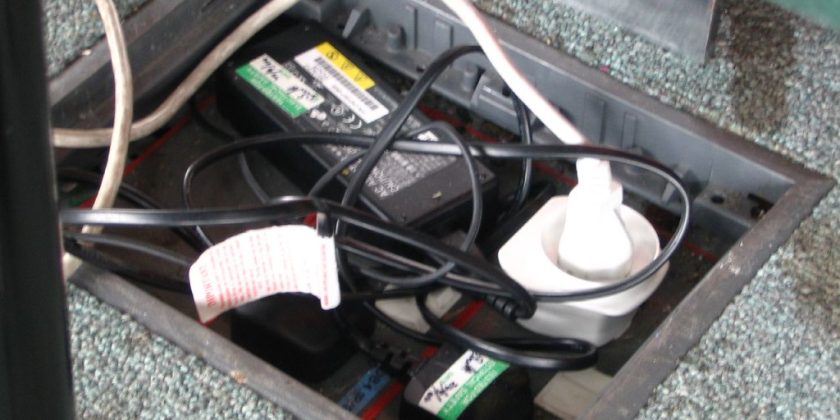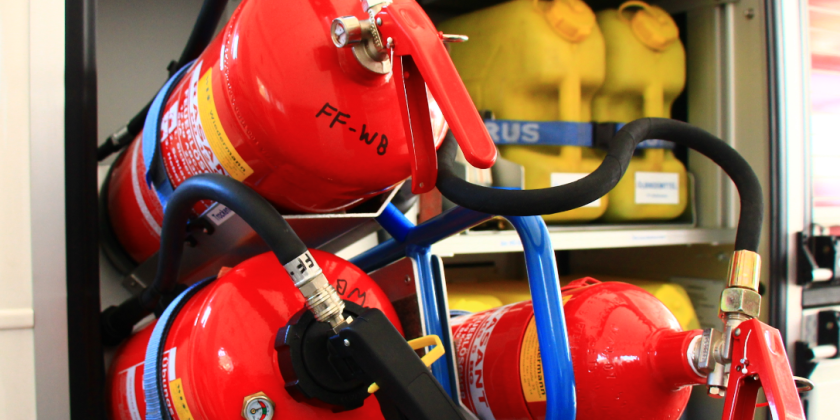EICR landlord renewals are a critical aspect of property management that every landlord must address to ensure the safety and compliance of their rental properties. An Electrical Installation Condition Report (EICR) provides a detailed assessment of the electrical installations within a property, identifying any issues that need attention. For landlords, keeping these reports up to date is not just a legal requirement but also a crucial step in safeguarding tenants and protecting the integrity of their investment. In this guide, we will break down everything landlords need to know about EICR renewals, covering the process, benefits, and key considerations to keep your properties in top shape.
Understanding EICR Landlord Renewals
What is an EICR?
An Electrical Installation Condition Report (EICR) is an official document produced following an assessment of a property’s electrical installations. Qualified electricians or electrical contractors conduct this thorough inspection to ensure all electrical systems and installations adhere to current safety standards. The EICR identifies any potential hazards, defects, or non-compliances that might pose a risk to occupants. It categorises these issues based on their severity and urgency, guiding landlords on necessary repairs or upgrades. Having an up-to-date EICR is essential for landlords, as it demonstrates due diligence in maintaining a safe living environment, helps prevent electrical accidents, and ensures compliance with legal obligations. Regular renewals of the EICR ensure that any emerging issues are promptly addressed, thereby safeguarding the property and its residents.
Legal Requirements for Landlords
Landlords in the UK are legally required to ensure the electrical safety of their rental properties. This includes obtaining a valid EICR at regular intervals. As of 1st June 2020, new regulations mandate that landlords have the electrical installations in their properties inspected and tested by a qualified person at least every five years. A copy of the most recent EICR must be provided to new tenants before they move in and to existing tenants within 28 days of the inspection. Additionally, a copy should be available to the local housing authority upon request. Failure to comply with these regulations can result in significant fines and penalties, alongside increased liability in the event of an electrical incident. Thus, staying up-to-date with EICR landlord renewals is not only a legal obligation but a critical aspect of responsible property management.
Benefits of Regular Renewals
Regular EICR landlord renewals offer numerous benefits that extend beyond mere compliance with legal requirements. Firstly, they provide peace of mind by ensuring that electrical installations are consistently safe and functioning correctly. This proactive approach helps prevent electrical faults that could lead to fires, electrocutions, or other hazardous situations. Secondly, regular inspections can identify minor issues before they become major, costly repairs, thus saving landlords money in the long run. Additionally, a current EICR can enhance the property’s appeal to potential tenants, as it demonstrates a commitment to safety and quality maintenance. By maintaining up-to-date EICRs, landlords also minimise the risk of legal disputes and potential fines, ensuring a smoother and more secure tenancy experience. In essence, regular EICR renewals protect both the landlord’s investment and the tenants’ safety, making them a crucial aspect of effective property management.
Preparing for an EICR Inspection
Choosing a Qualified Electrician
Selecting a qualified electrician for your EICR inspection is a critical step in ensuring the accuracy and reliability of the report. The electrician must be registered with a competent person scheme, such as NICEIC or NAPIT, which guarantees they meet the necessary standards for electrical safety and competence. It is advisable to verify their credentials and check for any reviews or testimonials from previous clients. A qualified electrician will conduct a thorough assessment, identifying any deficiencies and categorising them according to their severity. They should also provide clear and actionable recommendations for any necessary repairs or upgrades. By choosing a reputable and experienced professional, landlords can ensure that their EICR is both comprehensive and compliant with current regulations. This diligence not only safeguards the property and its occupants but also minimises the risk of any legal or financial repercussions.
Common Issues Found During Inspections
During EICR inspections, electricians often identify several common issues that need addressing to ensure the property’s electrical safety. One frequent problem is outdated or damaged wiring, which can pose a significant fire hazard if not promptly replaced. Another issue is the lack of proper earthing and bonding, which is crucial for preventing electric shocks. Faulty or inadequate circuit breakers and fuses are also commonly found, potentially leading to electrical overloads or short circuits. Additionally, electricians may discover improper or poorly executed electrical work from previous installations, which can compromise the overall safety and functionality of the system. Loose connections and ageing switchgear are other typical findings that require attention. By identifying these issues during EICR inspections, landlords can take the necessary steps to rectify them, thereby ensuring a safer living environment for tenants and maintaining compliance with legal standards.
Essential Documentation
When preparing for an EICR inspection, having the necessary documentation readily available can streamline the process and ensure a thorough evaluation. Key documents include previous EICRs and any records of electrical work carried out on the property. These records provide the electrician with a history of the electrical installations, aiding in the identification of recurring issues or areas needing special attention. Additionally, keep copies of any compliance certificates from past electrical repairs or upgrades, as these can demonstrate that certain aspects of the installation have already been addressed to current standards. Tenant reports of any electrical problems should also be provided, as these can highlight specific concerns that need investigation. By organising and presenting these documents, landlords can facilitate a more efficient and effective inspection, ensuring that all potential issues are identified and addressed promptly. This preparation not only aids in compliance but also enhances the overall safety and reliability of the property’s electrical system.
During the EICR Inspection
What to Expect
During the EICR inspection, the electrician will conduct a comprehensive assessment of the property’s electrical installations. This process involves both visual inspections and testing procedures. Initially, the electrician will examine the condition of the electrical panels, sockets, switches, and other visible components. They will check for signs of wear, damage, or non-compliance with current safety standards. Following this, they will perform tests on the electrical circuits to ensure they are operating safely and efficiently. This includes checking the integrity of the wiring, the effectiveness of the earthing and bonding, and the functionality of protective devices like circuit breakers. The inspection may take several hours, depending on the size and complexity of the property. Throughout the process, the electrician will document any issues, categorising them by their severity and urgency. This thorough examination ensures that all potential hazards are identified, allowing landlords to take appropriate corrective actions.
Key Areas of Focus
During an EICR inspection, electricians will concentrate on several critical areas to ensure the property’s electrical safety. One primary focus is the consumer unit, also known as the fuse box, where they will check for proper labelling, functionality, and compliance with current regulations. Another key area is the integrity of the wiring system, including checking for any signs of ageing, damage, or deterioration that could pose a risk. The electrician will also inspect the earthing and bonding, ensuring that all metal parts are correctly earthed to prevent electric shocks. Additionally, they will examine the condition and operation of sockets, switches, and light fittings, looking for any defects or unsafe installations. Protective devices such as circuit breakers and RCDs (Residual Current Devices) will be tested for their effectiveness in preventing electrical overloads and faults. By focusing on these areas, the inspection ensures a comprehensive evaluation of the property’s electrical safety and compliance.
Handling Urgent Repairs
If an EICR inspection identifies urgent repairs, it’s crucial to address these issues promptly to ensure the safety of the property and its occupants. Urgent repairs typically involve defects classified as C1 or C2. A C1 classification indicates an immediate danger, requiring the electrician to make it safe on the spot. These issues might include exposed live wires or faulty protective devices. A C2 classification, while not immediately dangerous, poses a potential risk and should be rectified as soon as possible. Examples include outdated wiring or inadequate earthing. In either case, landlords should arrange for a qualified electrician to carry out the necessary repairs without delay. Addressing these urgent issues promptly not only ensures compliance with legal requirements but also demonstrates a commitment to tenant safety. Once repairs are completed, a follow-up inspection may be needed to confirm that the property is now compliant and safe.
Post-Inspection Steps
Interpreting Your EICR Report
After the EICR inspection, you will receive a detailed report outlining the electrician’s findings. Understanding this report is crucial for taking appropriate actions. The report categorises defects using specific codes: C1 indicates immediate danger that needs urgent attention, C2 points to potential dangers requiring prompt repairs, and C3 suggests improvements to enhance safety but are not mandatory. The report also includes observations, which are issues that, while not immediately dangerous, could become problematic over time if not addressed. The overall assessment will conclude with a “satisfactory” or “unsatisfactory” rating. A satisfactory rating means the property meets current safety standards, while an unsatisfactory rating requires remedial action to rectify identified issues. By carefully reviewing the report, landlords can prioritise necessary repairs and ensure their property remains compliant and safe for tenants. Understanding and acting on the EICR report’s recommendations is a critical step in effective property management.
Addressing Identified Issues
Addressing the issues identified in your EICR report is essential for ensuring the safety and compliance of your property. Start by prioritising repairs based on the severity of the defects. Urgent issues classified as C1 should be resolved immediately, as they pose an immediate danger. C2 issues, while not immediately hazardous, still require prompt attention to prevent potential risks. For C3 recommendations, consider scheduling them as part of your regular maintenance to improve overall safety, even though they are not mandatory. Engage a qualified electrician to carry out the necessary repairs, ensuring that all work complies with current safety standards. After completing the repairs, it may be wise to arrange a follow-up inspection to confirm that the issues have been adequately addressed. Keeping records of all repairs and follow-up inspections is also important for future reference and compliance. By systematically addressing the identified issues, landlords can maintain a safe and legally compliant rental property.
Scheduling the Next Renewal
Once you have addressed all identified issues from the EICR report, it’s important to schedule your next renewal to ensure ongoing compliance and safety. According to UK regulations, landlords must have their properties’ electrical installations inspected and tested at least every five years. However, depending on the condition of your electrical systems and the recommendations of your electrician, you might need to conduct inspections more frequently. Mark the next inspection date clearly in your calendar and set reminders well in advance. Keeping track of renewal dates helps avoid lapses in compliance, which could result in legal penalties and increased risk to tenant safety. Additionally, inform your tenants of the upcoming renewal to ensure they are aware and can prepare if necessary. By planning ahead and adhering to the recommended inspection intervals, landlords can maintain the integrity of their properties and ensure a safe living environment for their tenants.
EICR Landlord Renewals Best Practices
Staying Compliant
Staying compliant with EICR landlord renewals is crucial for ensuring the safety of your tenants and avoiding legal pitfalls. First, always adhere to the five-year inspection interval mandated by UK regulations, or more frequently if advised by your electrician. Keep thorough records of all inspections, reports, and repairs, as these documents may be required by local authorities or during tenancy disputes. Ensure that any remedial work highlighted in the EICR is completed promptly by a qualified electrician. Additionally, provide copies of the latest EICR to your tenants and the local housing authority upon request. Regularly review and update your knowledge of electrical safety standards and legal requirements to remain informed of any changes. By maintaining a proactive approach to compliance, you not only protect your property investment but also demonstrate a commitment to tenant safety and responsible property management.
Tips for Smooth Renewals
Ensuring smooth EICR landlord renewals can save time, money, and stress. Start by scheduling your inspections well in advance to avoid last-minute rushes, which can lead to higher costs and limited availability of qualified electricians. Maintain a good relationship with a trusted electrician who understands your property’s history and specific needs. Keeping detailed records of past EICR reports, repairs, and maintenance can help the electrician conduct a more efficient inspection. Regularly communicate with your tenants about the importance of EICR inspections and any required access to their units, giving them ample notice to prepare. Address minor electrical issues as they arise, rather than waiting for the next scheduled inspection, to prevent them from becoming major problems. By following these tips, landlords can ensure that the renewal process is not only compliant but also efficient and minimally disruptive to both themselves and their tenants.
Maintaining Electrical Safety
Maintaining electrical safety between EICR renewals is vital for the well-being of your tenants and the protection of your property. Conduct regular visual inspections of electrical installations, looking for signs of wear, damage, or tampering. Encourage tenants to report any electrical issues immediately, such as flickering lights, tripped circuit breakers, or unusual noises from electrical outlets. Ensure that appliances provided as part of the tenancy are regularly tested and maintained. Avoid overloading sockets and educate tenants on the importance of safe electrical practices. Keep up-to-date with the latest electrical safety standards and regulations to ensure ongoing compliance. Additionally, consider installing Residual Current Devices (RCDs) if they are not already in place, as they provide an extra layer of protection against electrical faults. By taking these proactive steps, landlords can significantly reduce the risk of electrical accidents and ensure a safe living environment throughout the tenancy.



